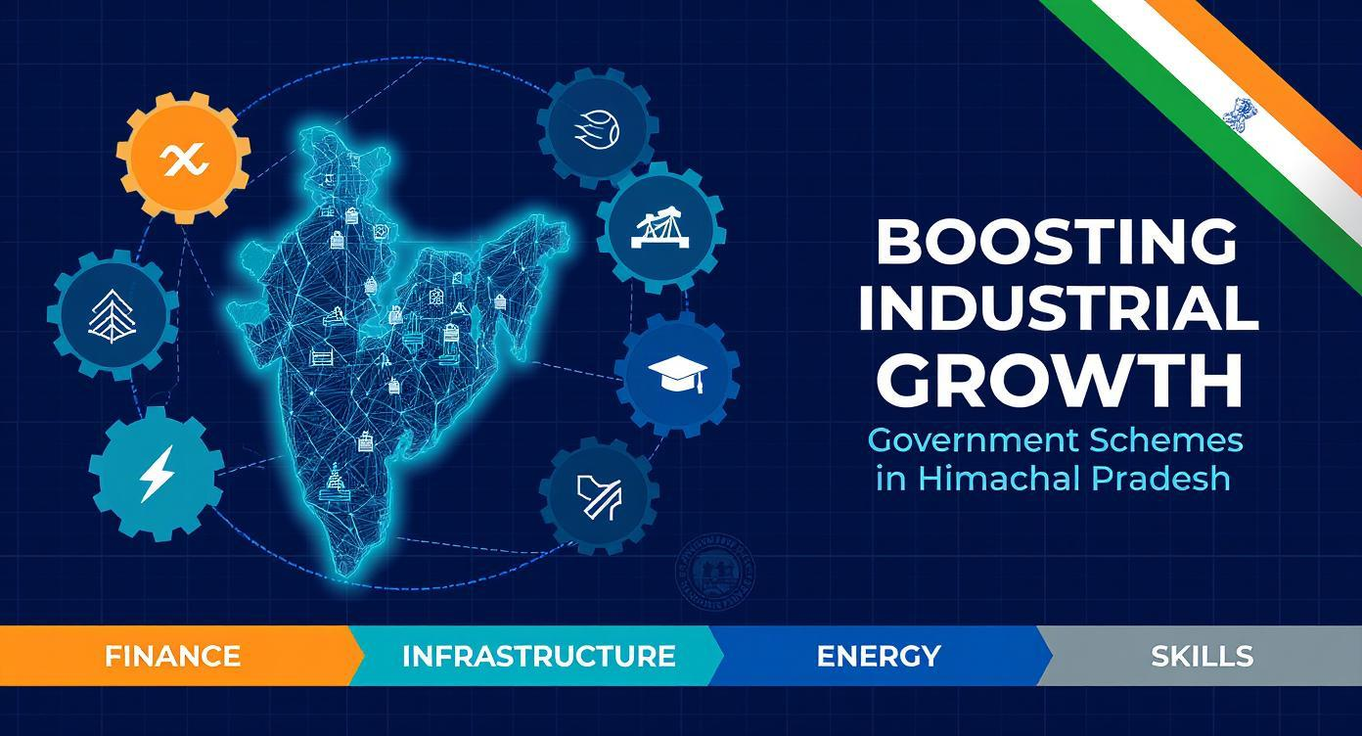The transformation currently taking place in India’s manufacturing sector is significantly due to the Make In India scheme which is one of the flagship programs at the level of the government. The initiative launched in 2014 intends to increase the country’s manufacturing capabilities, create employment, and attract foreign investment. The Make in India initiative has indeed sparked a tide of reforms and government policies which aims to create an edge for India in the global market. This article will focus mainly on various government policies affecting India’s manufacturing sector, with particular regard to the Make in India initiative, and its far-reaching impacts.
For any Business related Query: Visit NPCS
The Role of the Make in India Initiative in Shaping Policies
The Make in India Initiative has been integrated into the economic growth strategy and indeed cannot be thought of in isolation from its impact on several government policies. It emphasizes the manufacture within India itself to develop India as the global manufacturing hub. Of course, there are different ways in which the government will bless the Make in India initiative through the policies it has put in place. Such policies include:
- Reforms in Ease of Doing Businesses: Make in India Initiative indeed creates an important catalyst for reforms in India’s business environment. This has made things easier for manufacturers to set up and operate in India towards delivering a more favorable environment for manufacturing growth. The government has cut red tape and made several measures to bring about change regarding the ease of doing business in the country, which has a streamlined processing of business affairs in India.
- Attracting Foreign Direct Investment (FDI): The primary goal of the Make in India Initiative is to attract foreign direct investment (FDI) into the manufacturing sector. To that end, the government has introduced policies allowing 100 percent FDI across several sectors, including defense, aviation, and electronics. These policies have not only attracted foreign companies to set up manufacturing units in India but have also created numerous job opportunities.
- Sector-Specific Policies: By formulating various sector-specific policies, the Make in India initiative aims at boosting manufacturing in key sectors. Electronics, automobiles, and textiles are some of the pertinent domains. For example, the government brought in the Production Linked Incentive (PLI) Scheme to attract greater domestic production towards electronic devices like mobile phones. This has seriously set India to transformation into a powerhouse when it comes to mobile phone manufacturing.
Also Visit: Market Research Reports
Impact of the Make in India Initiative on the Manufacturing Ecosystem
The Make in India initiative in a very significant way boosted the manufacturing ecosystem regarding innovations, skill developments, and strong supply chains. Some major impacts can be as follows:
- Stimulate innovation and technology: The Make in India initiative has encouraged the manufacturers to upgrade their technology and adopt innovations. The manufacturers, driven by the government’s thrust on research and development (R&D), face competition in applying advanced technologies like automation, AI, and robotics. These ultimately drive the manufacturing revolution.
- Employment Generation and Skill Development: One of the most frequent statements, with the expansion of the manufacturing section, it has provided more than millions of employment opportunities across industries. To boost these skills, the government has also launched various skill development programs to keep the workforce ready with modern equipment to meet future needs of manufacturing.
- Development of Infrastructure: There is massive infrastructure development due to the Make in India Initiative , which comprises industrial parks, logistics hubs, as well as smart cities. The improvement in infrastructure has now made resource mobilization and distribution at easier costs and, finally, reduced operational costs for manufacturers.
Related article: Stand Up India scheme launched by Government of India. Now, you don’t have to be a Big Business Tycoon to Start Your Own Business
Government Policies Supporting the Manufacturing Sector
It aligns with the Make in India initiative by introducing various government policies for the support of manufacturing. Such policies help in creating a conducive environment for manufacturing to grow and provide a solution to some of the challenges that manufacturers face.
- National Manufacturing Policy (NMP): The NMP aims to raise the manufacturing portion of the GDP in India up to 25% within 2025. The National Manufacturing Policy deals with productivity improvement, innovation, and creation of world-class infrastructure in the country. It focuses on skills development in creating a competitive workforce.
- Goods and Services Tax (GST): The introduction of GST affects the manufacturing sector positively. It simplifies tax bases within which it reduced the levy on the manufacturers and finally, eliminated the cascading taxes. It enabled the supply chain to run smoothly with less cost burden on the manufacturer.
- Make in India and Green Manufacturing: The government has also framed policies to help foster sustainable and green manufacturing practices. There is a huge push under Make in India initiative for eco-friendly production methods considering that they will be at par with global trends in sustainability. Incentives have now also been introduced for manufacturers adopting green technologies and reducing CO2 emissions.
- PLI Scheme (Production Linked Incentive): The PLI scheme is among the most significant policies of the Make in India initiative. It provides financial incentives to manufacturers for increasing their production and employing people in India. The scheme covers several sectors, including electronics, textiles, and auto manufacturing. It has already spurred massive investment in these industries.
Related Business Plans: Business plans on different manufacturing Industries
Challenges Faced by the Manufacturing Sector
In spite of the Make in India initiative being a good initiative for manufacturing growth, it left many challenges behind. Such key challenges include:
- High Input Costs: Input costs, for instance raw materials, energy, and labor, keep high again despite the effort to bring down by the government in price. The Make In India initiative can address these issues using better infrastructure facilitation since supply chains.
- International Competition: Emerging to be quite strong competitors in global manufacturing, are, among other places, China and Vietnam. India must continuously manage its competitiveness through innovation, skill development, and infrastructure to become one of the principal centres of global manufacturing.
- Disappointing Regulation: Improvements are made by the government regarding the ease of doing business; however, regulatory hurdles still exist. Approval, permitting, licensing-the usual run-around takes place for production facilities and delays production as well as incurs additional expenses to the manufacturer.
For Business related Videos: Visit Entrepreneur India
Conclusion
The Make in India initiative has played a pivotal role in reshaping the manufacturing sector in India. By using strategic government policy, development of infrastructure, and sector-specific incentives targeting India as a potential attractive destination for manufacturing enterprises, this initiative will not only grow traditional manufacturing sectors but also strengthen advanced and sustainable manufacturing. While such support from the government continues, India will soon emerge as the global manufacturing leader driving economic growth and creating millions of jobs for its people.
By focusing on innovation, skill development, and infrastructure, the Make in India initiative has set the stage for a thriving manufacturing sector that will continue to grow and compete on the global stage.







The ‘Make in India’ initiative is truly transforming the manufacturing landscape, encouraging local production and attracting global investments. It’s great to see how government policies are evolving to support innovation, infrastructure development, and ease of doing business, which will undoubtedly boost the sector’s growth and sustainability. Exciting times ahead for the Indian manufacturing industry!